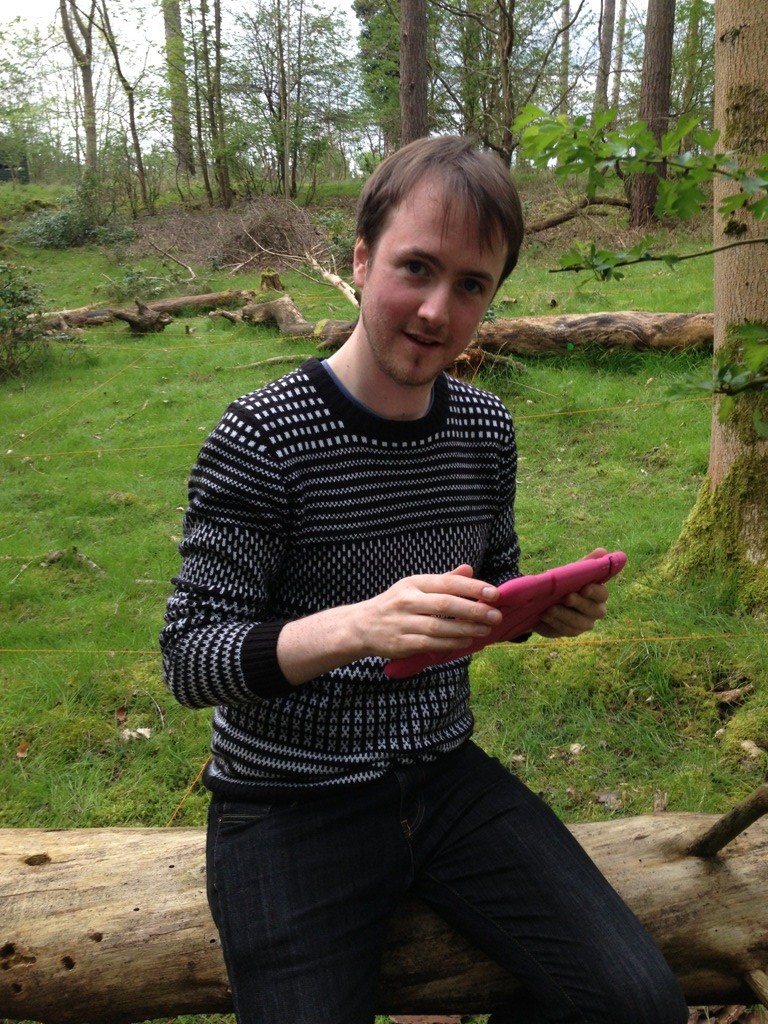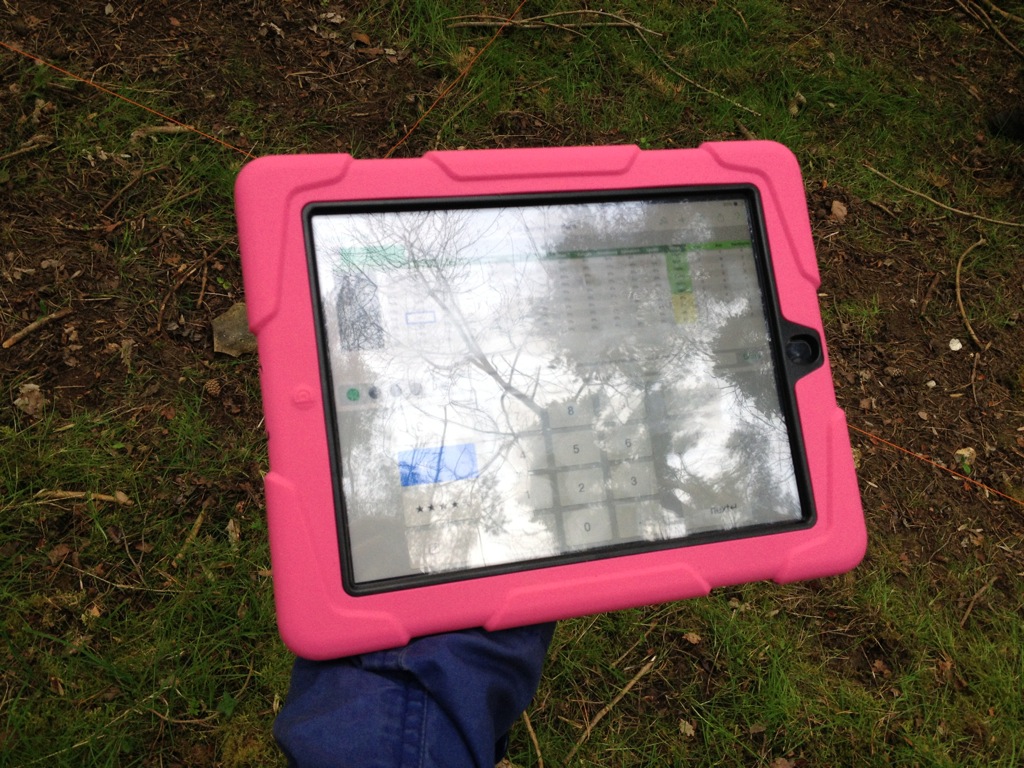The penultimate step before taking Living Symphonies out into the forest is to conduct a detailed spatial survey of the site in question. This involves laying out a 30x20m line grid over the foliage, and recording the precise distributions of trees, plants and ground flora found within it. Every square metre is manually surveyed for its proportional composition: how much moss, grass, bramble and bracken is present within each square? How many elm trees, and how much decaying wood?
This process is vital to form the map which structures the final piece, spatially mapping the lay of the land so that the conductor and spatialiser software can generate the appropriate musical motifs and locate them in the right positions. From a speaker hidden in the bramble undergrowth beneath a sycamore tree, we should hear the interwoven melodies of bramble and sycamore, alongside any creatures that might be moving through it.
Surveying is a long, arduous and manual task. We were thus fortunate to have an excellent team on board, including Rory Gibb (below) and Edward Scott-Clark, who was on-site to shoot footage for a forthcoming film of Living Symphonies and kindly agreed to also lend his services to the survey.
Having laid the grid needed to orient ourselves within the space, we proceed to log the plantlife in each square, via iPads housed in waterproof casings. This setup allows us to easily export the data into .csv format, ready to import into the simulation and generate the spatially-diffused composition of Living Symphonies.
The final tally is 90 trees in all, predominantly hawthorn and ash with a scattering of Scots pine, elm and sycamore. One surprise was the discovery of an orchid rarely seen outside of ancient woodlands, identified with the aid of Forestry Commission ecologist Neal Armour-Chelu.
In terms of animal life, the site is incredibly diverse, with numerous resident bird species — including the rare nightjar, groups of noisy crossbills, and the buzzards that we saw soaring overhead — and traces of three different species of deer. This should make for a rich and varied composition.



